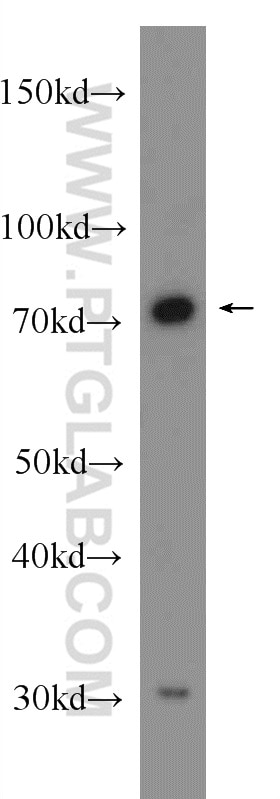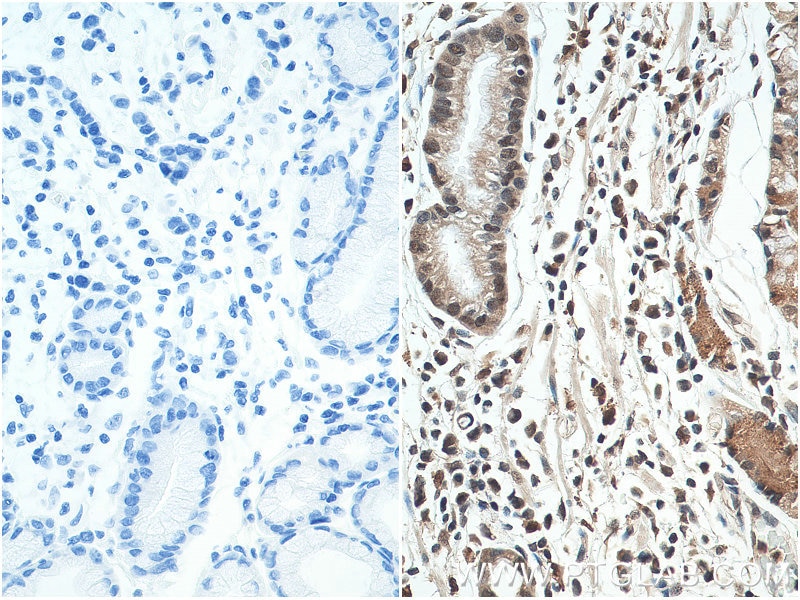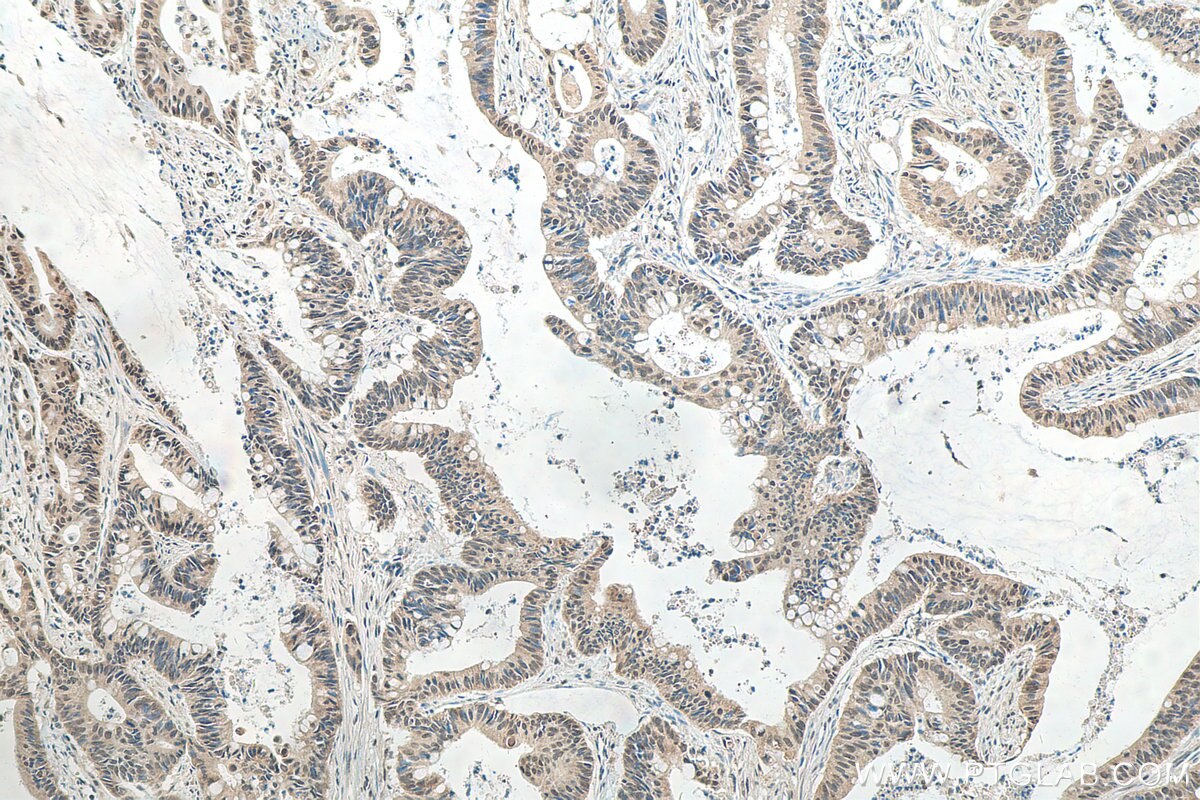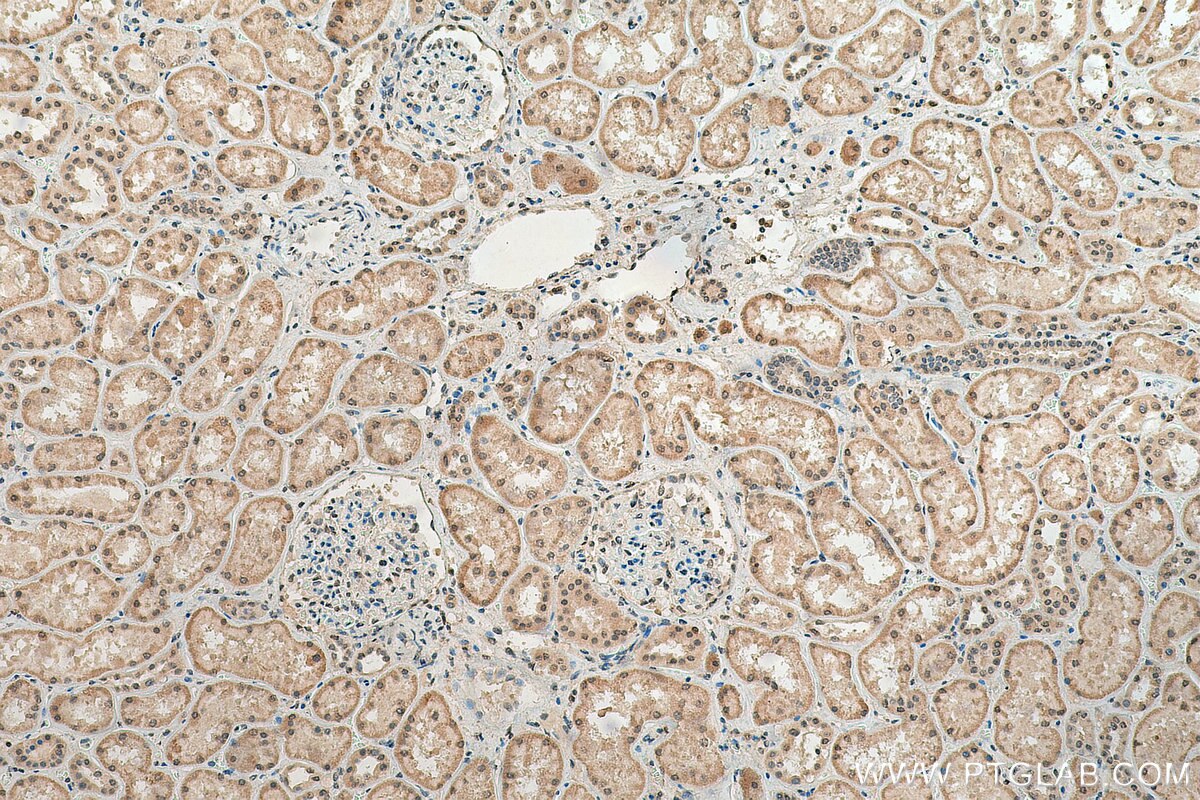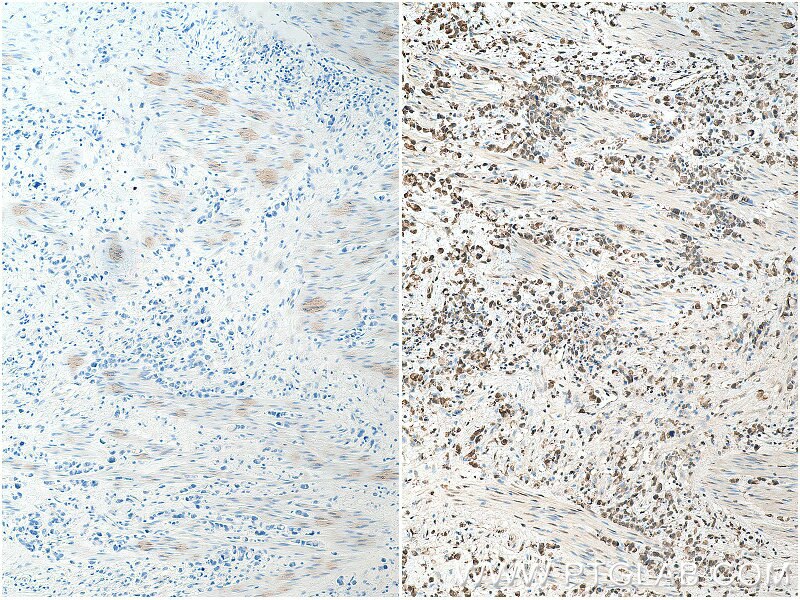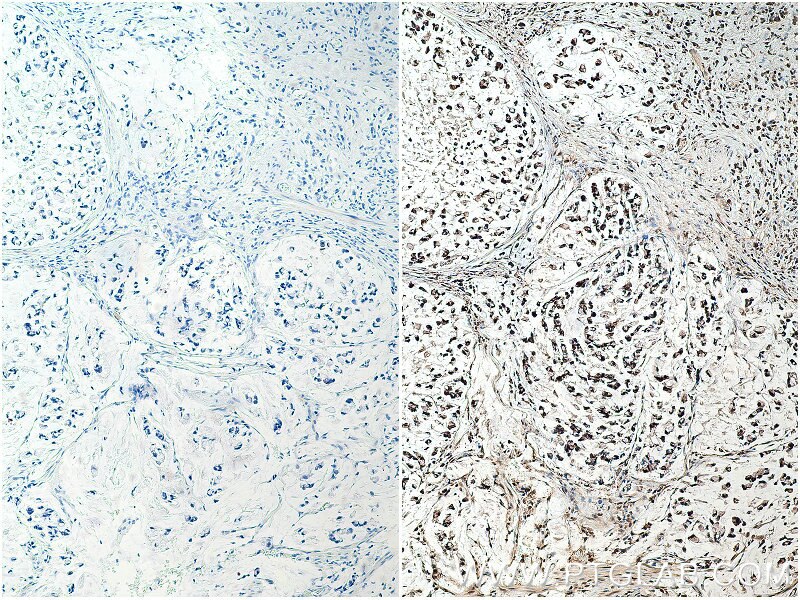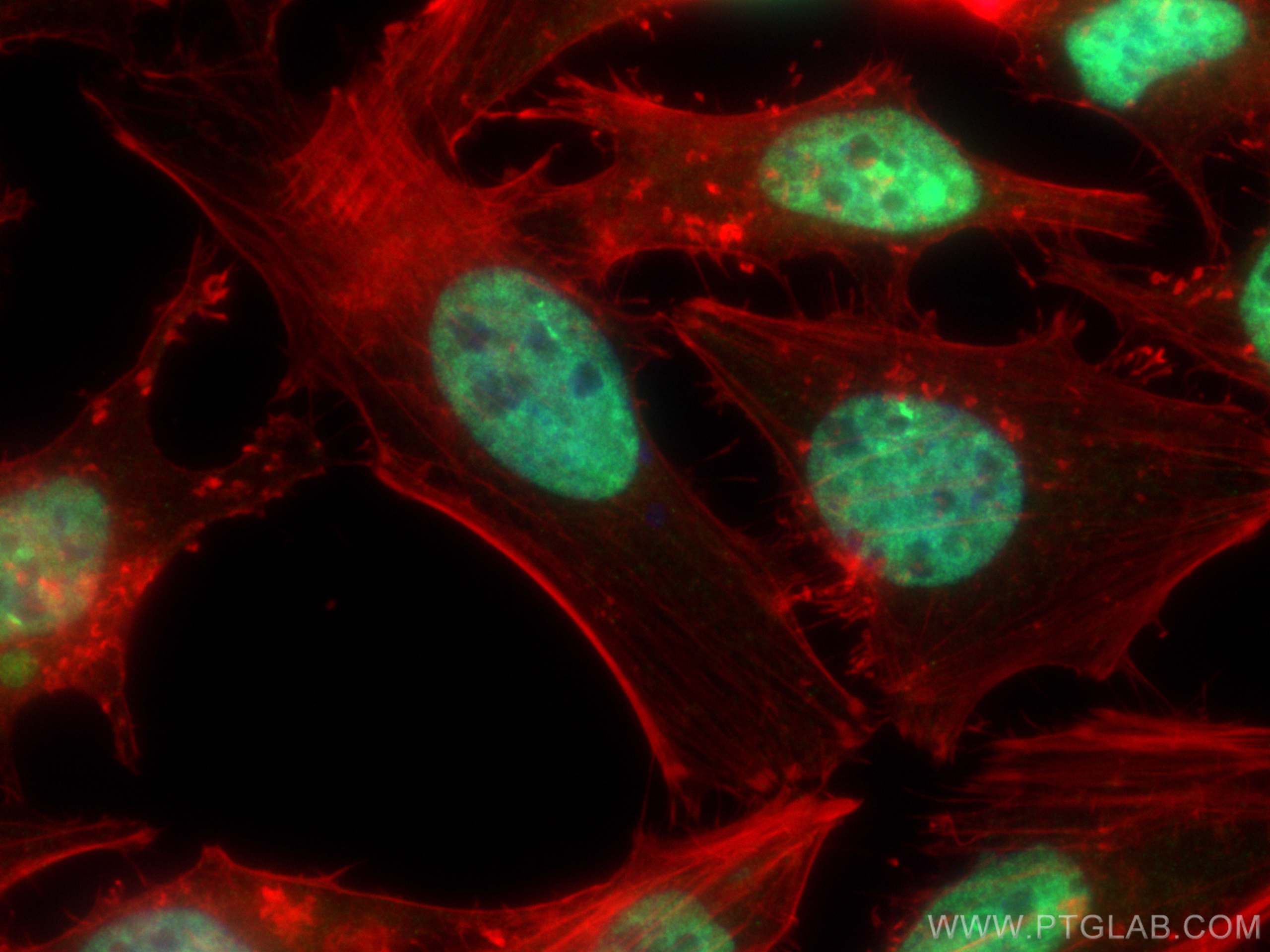- Phare
- Validé par KD/KO
Anticorps Polyclonal de lapin anti-HNRNPL
HNRNPL Polyclonal Antibody for WB, IP, IF, IHC, ELISA
Hôte / Isotype
Lapin / IgG
Réactivité testée
Humain, souris et plus (3)
Applications
WB, IHC, IF/ICC, IP, ChIP, ELISA
Conjugaison
Non conjugué
N° de cat : 18354-1-AP
Synonymes
Galerie de données de validation
Applications testées
| Résultats positifs en WB | cellules BxPC-3, cellules PC-3, cellules RAW 264.7, tissu hépatique de souris |
| Résultats positifs en IP | cellules BxPC-3, |
| Résultats positifs en IHC | tissu de cancer de l'estomac humain, tissu de cancer du côlon humain, tissu rénal humain il est suggéré de démasquer l'antigène avec un tampon de TE buffer pH 9.0; (*) À défaut, 'le démasquage de l'antigène peut être 'effectué avec un tampon citrate pH 6,0. |
| Résultats positifs en IF/ICC | cellules HeLa, |
Dilution recommandée
| Application | Dilution |
|---|---|
| Western Blot (WB) | WB : 1:1000-1:4000 |
| Immunoprécipitation (IP) | IP : 0.5-4.0 ug for 1.0-3.0 mg of total protein lysate |
| Immunohistochimie (IHC) | IHC : 1:50-1:500 |
| Immunofluorescence (IF)/ICC | IF/ICC : 1:50-1:500 |
| It is recommended that this reagent should be titrated in each testing system to obtain optimal results. | |
| Sample-dependent, check data in validation data gallery | |
Applications publiées
| KD/KO | See 1 publications below |
| WB | See 4 publications below |
| IHC | See 1 publications below |
| IF | See 1 publications below |
| ChIP | See 1 publications below |
Informations sur le produit
18354-1-AP cible HNRNPL dans les applications de WB, IHC, IF/ICC, IP, ChIP, ELISA et montre une réactivité avec des échantillons Humain, souris
| Réactivité | Humain, souris |
| Réactivité citée | bovin, Humain, porc, Hamster |
| Hôte / Isotype | Lapin / IgG |
| Clonalité | Polyclonal |
| Type | Anticorps |
| Immunogène | HNRNPL Protéine recombinante Ag13211 |
| Nom complet | heterogeneous nuclear ribonucleoprotein L |
| Masse moléculaire calculée | 572 aa, 62 kDa |
| Poids moléculaire observé | 70 kDa |
| Numéro d’acquisition GenBank | BC069184 |
| Symbole du gène | HNRNPL |
| Identification du gène (NCBI) | 3191 |
| Conjugaison | Non conjugué |
| Forme | Liquide |
| Méthode de purification | Purification par affinité contre l'antigène |
| Tampon de stockage | PBS avec azoture de sodium à 0,02 % et glycérol à 50 % pH 7,3 |
| Conditions de stockage | Stocker à -20°C. Stable pendant un an après l'expédition. L'aliquotage n'est pas nécessaire pour le stockage à -20oC Les 20ul contiennent 0,1% de BSA. |
Informations générales
Heterogeneous nuclear ribonucleoprotein L (hnRNP L) is a component of the heterogeneous nuclear ribonucleoprotein (hnRNP) complexes which provide the substrate for the processing events that pre-mRNAs undergo before becoming functional, translatable mRNAs in the cytoplasm. It is associated with most nascent transcripts including those of the landmark giant loops of amphibian lampbrush chromosomes. The two isoforms of hnRNP L are generated by alternative splicing. The human hnRNPL gene encodes a protein that is localized in the nucleoplasm and cytoplasm. This antibody may recognize both isoforms of the hnRNP L protein.
Protocole
| Product Specific Protocols | |
|---|---|
| WB protocol for HNRNPL antibody 18354-1-AP | Download protocol |
| IHC protocol for HNRNPL antibody 18354-1-AP | Download protocol |
| IF protocol for HNRNPL antibody 18354-1-AP | Download protocol |
| IP protocol for HNRNPL antibody 18354-1-AP | Download protocol |
| Standard Protocols | |
|---|---|
| Click here to view our Standard Protocols |
Publications
| Species | Application | Title |
|---|---|---|
RNA Biol CFIm25 regulates human stem cell function independently of its role in mRNA alternative polyadenylation. | ||
J Proteome Res C1QBP Negatively Regulates the Activation of Oncoprotein YBX1 in the Renal Cell Carcinoma as Revealed by Interactomics Analysis. | ||
J Virol Heterogeneous Nuclear Ribonucleoprotein L Negatively Regulates Foot-and-Mouth Disease Virus Replication through Inhibition of Viral RNA Synthesis by Interacting with the Internal Ribosome Entry Site in the 5' Untranslated Region.
| ||
DNA Cell Biol HNRNPL Is Identified and Validated as a Prognostic Biomarker Associated with Microsatellite Instability in Human Gastric Cancer. |

